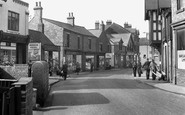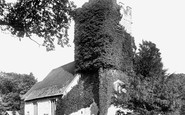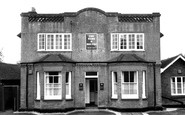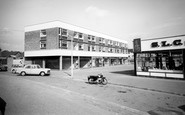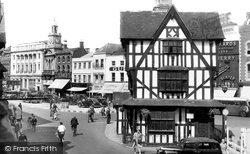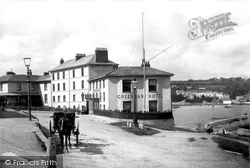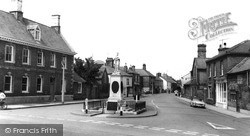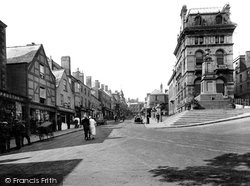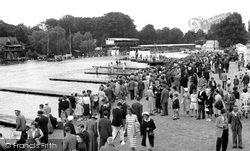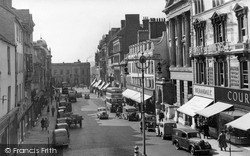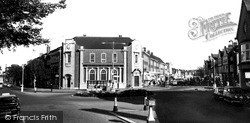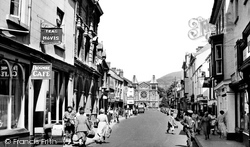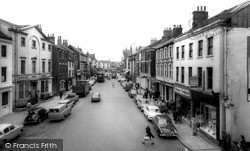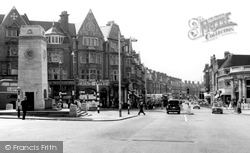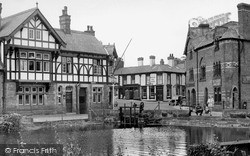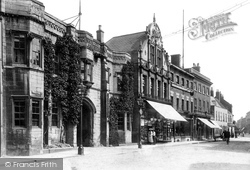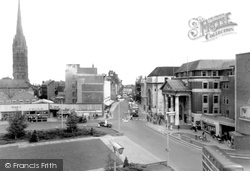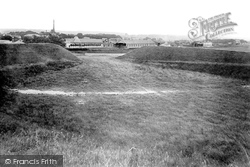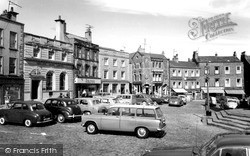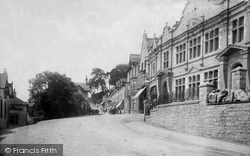Places
3 places found.
Those places high-lighted have photos. All locations may have maps, books and memories.
Photos
68 photos found. Showing results 361 to 68.
Maps
12 maps found.
Books
15 books found. Showing results 433 to 15.
Memories
7,562 memories found. Showing results 181 to 190.
Mill Street Clowne. 1950
The gentleman pushing a cart in the foreground of this picture is my grandfather, Ernest Pearce (1895-1970). The cart was used to transport bundles of sticks that he cut for sale as firewood. They were sold for 4d a bundle. This ...Read more
A memory of Clowne in 1950 by
Even Better Today
I still visit this church, although it is locked much of the time. It looks even better today than it did way back then. The village of 'Send' was supposed to have been built around this church (I am told), however it ended up a ...Read more
A memory of Send by
Where I Grew Up
I lived most of my life in Sible Hedingham, as a family we moved there from London in 1962. I was just 2 years old at the time. My father Robert Farren, "Bob" as he was best known and my mother Ivy, took over the licence of ...Read more
A memory of Sible Hedingham in 1962 by
Growing Up In Westend In The 70s And 80s
I was born in 1965 and grew up in Westend. I moved to America in 1988 and have only been back to visit once since then back in 1989/90. I can't really imagine how much the village has ...Read more
A memory of West End by
Above Shop Flats
1963: We were so desperate for somewhere to live when we got married that we almost signed up for one of the upstairs flats above the shops. The flats were brand new and looked very attractive back then. The the reality set in ...Read more
A memory of South Wigston by
My Memories Of Salford
I was born in the upstairs back room of my maternal Gran's house at 20 John Street, Pendleton. I was told there was an air raid going on at the time. My first school was John Street where there was a play ground on the roof, but ...Read more
A memory of Salford in 1951 by
Memories
As a boy i would wander through fields and in water, go fishing, make swings was happy with things: Would roam with the dog slip on Algae green log, smell rain on the grass polish Grans brass: Climb dykes, collect conkers leap Cargills, ...Read more
A memory of Blairgowrie in 1974 by
Foreshore Houseboats
In the early 1950's walking past the little white cottage that is now The Country Park Inn, towards Ferriby, one could see a selection of little ships (Puffers) pulled up high & dry on the river bank. that were used as ...Read more
A memory of Hessle in 1952 by
The Gatenby Family The Old Postoffice
I was born in 1942 at Oswaldkirk postoffice. My mother was the youngest of three sisters. Joyce the eldest was a nurse in Leeds, Olive the 2ed helped run the shop and postoffice, and my mother Nancy who also ...Read more
A memory of Oswaldkirk in 1942 by
Mount Edgecumbe Ruins
One hundred years after this photograph was taken my husband and I visited these ruins during a holiday when we celebrated our Silver Wedding. We had came back to the West Country so that we could visit all our old haunts. We ...Read more
A memory of Plymouth in 1990 by
Captions
2,501 captions found. Showing results 433 to 456.
Matlock Bank in the centre spreads up the eastern bank of the Derwent.
Stramongate Bridge was also known as Miller or Mill Bridge, because it linked the mills on the eastern bank of the River Kent to the 'Auld Grey Town' on the other bank.
On the left is the corner of Lloyds Bank; then comes Siddal and Kirby's shoe shop, the Wool Shop, now Nationwide with a new shop front, and the Midland Bank.
The Old House dates from 1612 and was originally a guildhall for the city's butchers. More recently it housed a branch of Lloyds Bank, who gave the building to the city in 1927.
The Green Bank Hotel, on the south bank of the Penryn River, was built in 1785 to cash in on the trade brought to the town by the mail packets.
The war memorial to the men of two world wars also includes W G Greenwood, who died in 1951 in Korea.
With the High Street to the left, and two little girls (right) posing with all the assurance of modern models outside the villa adjoining Dale's ornamental shop entrance, a cart stands at the beginning
Here we see a typical shopping parade of the 1950s. It includes two banks, a newsagent's and a garage. The Midland Bank, on the corner of the row, now bears the name HSBC.
The businesses on the left have all gone, but Barclays Bank, the impressive building on the right, and Lloyds Bank farther up the High Street remain in the town - although Lloyds has moved
Both views are from the Berkshire bank. One was taken looking towards the bridge; the other was taken looking north-east to the finish- ing line.
The Roach was covered here in 1910. The Oldham Joint Stock Bank on the right had become the London City and Midland Bank.
The garden in the foreground is that of a house aptly named Arrow Bank, a beautifully situated house now used for a bed and breakfast business.
On the right is the splendid facade of the old Northamptonshire Union Bank, which became the National Provincial Bank and today is Nat West.
Coventry endured dozens of air raids from 1940 to 1942, and much of the city centre was flattened. The stately buildings on the right here are among the few which survived the bombs.
Originally built for Barclays, the Midland Bank was built in 1908 in the Georgian style from a design by Hugh Seebohm.
The Frogmore Café (left) offered busy shoppers a break until 1969, when it was taken over by Sketchleys the cleaners.
We are looking from the Town Hall down the grand vista of the largely 18th-century Market Place; it was known as the Shambles in the previous century, and designated for the sale of fresh meat
An Edwardian, steeply-gabled terrace of shops and flats overlooks the dignified stone island War Memorial of 1923, with its stepped approach.
This view from The Groves shows The Cross (right) and Eagle Brow (left.)
The Angel's sash windows replace the original windows, although the medieval stone hood moulds survive, as do the buttresses.
By 1941 planning was well under way to rebuild the shattered heart of Coventry.
Very little of the Roman occupation of Dorchester, Durnovaria, remains.
The amount of change since 1929 is surprisingly small, although Cookes the stationer's has become Austin's.
Between the right-hand blind and the entrance doorway was the London City and Midland Bank, forerunner of the Midland Bank, and now the police office.
Places (3)
Photos (68)
Memories (7562)
Books (15)
Maps (12)



